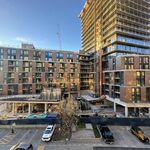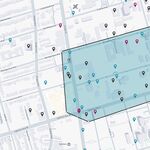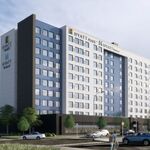I expect that they will (eventually) discontinue the old Bombardier bilevels at the SmartTrack stations, to ensure that the Bombardier bilevels can go express to Unionville/Brampton, and speed up the Kitchener/Stoufville service in the SmartTrack era. The Georgetown corridor now has space for these express routes, but some areas beyond will need to be expanded, then I'd expect this would be the Metrolinx plan by the 2030s or so.
It's possible they will keep the Bombardier bilevels for a very long time, but will be reallocated away from local/416 stations over the long term, with EMU RER between Oakville-Pickering, and Brampton-Unionville, and bombardier bilevels going express to the 905 stations (either diesel or electric locomotives). This is likely to happen if they convert 416 GO stations to high platforms, and keep 905 stations low platforms.
If corridor capacity is a problem and they cannot easily widen for express trains, and when the bilevels wear out (gradual phase out of the oldest coaches within twenty years), they may run SmartTrack trains for the entire Stoufville line, short-turning every other train at Unionville (30min all day service), for more frequent service, corridor efficiency and operational efficiency, while keeping fewer peak period express bilevel trains. But that is a big if, if the economics work out better that way. Not at first, but eventually.
Regarding platform length, that greatly depends on whether they go with low or high platforms. It is worth mentioning
The Great Platform Height Debate. If they use high platforms, SmartTrack may use approx 150 meter platforms, possibly with bilevel EMUs (similar to Sydney's hybrid subway/commuter train system). They would have to do some creativity with existing GO stations. Currently UPX is high platform, and tomorrow's high speed train are all high platforms (e.g. Metrolinx operates a GO HSR Kitchener in the 2030s, as HSR is currently an Ontario mandate and might fall under the Metrolinx umbrella), boarding times are faster and accessibility is better, so we will have to see what Metrolinx decides.
If Metrolinx uses low platform EMUs, designing the new platforms for (future) 300 meter single levels is probably quite realistic since the existing GO platforms are easily reused. However, I now peg this as only 50-50 chance they will stick to low level for SmartTrack. It also takes a full 3 to 4 minutes to walk the length of a 300 meter platform, which slows station entry/exit greatly, affecting the attractiveness of the service. It's no fun exiting certain stations like Long Branch during the middle of the winter, if the exit is a 3 minute walk away at the opposite end of the center platform, during -20C freezing weather! 150 meter trains will be much more popular for high-frequency subway-convenience service, the shorter platform length saves more time than the bilevels-versus-singlelevels, especially with level boarding. Given the choice, I greatly prefer 150 meter level-boarding accessible bilevels, over 300 meter low-level boarding single-levels. Similiar capacity, but faster boarding AND potentially faster station entry/exit (especially at single-exit stations).
You may very well be right, but I'm hedging my bets.
But, alas, the fly in the ointment is that RER trains (SmartTrack) MAY also eventually
replace the local/416 sections of Kitchener-Stoufville GO service. Peak-period Kitchener GOtrains are among the most crowded GOtrains on the network, and we have to factor this this in. So ADD local GO traffic above and beyond DRL traffic. Also, there is also the potential additional traffic Eglinton Crosstown LRT will add to GO (including SmartTrack) as there will be greatly improved TTC-Metrolinx interchange stations going along with SmartTrack.
Now, it gets more complicated. Once they try pushing frequencies to 7 minutes or less, classic GOtrains might no longer stop at RER/SmartTrack stations, for operational efficiency sake. There may be
no operationally efficient way to quickly run both EMU RER/SmartTrack trains and classic locomotive driven GO trains with short headways at the same track due to performance differences. They may run local/express where corridor space allows. Georgetown corridor space could handle it, but Stoufville Line will need a good expansion to support local/express separation.
From day one (with ECLRT finished) the smaller SmartTrack trains will probably quickly become crowded at peak periods, even if mostly empty offpeak. Eventually within a number of years, there will be pressure to increase operational efficiencies, shorten headways to as little as 3-4 minutes within a couple decades, and that's only doable by expunging the Bombardier bilevels from the specific track SmartTrack/RER runs on, confining it to a separate express track for the purpose of bringing in 905 service beyond the SmartTrack endpoints (using Eglinton/Union/Unionville as interchanges between the 416/905 GOtrain services). 3-minute subway style headways may only happen when the underground corridor gets built through downtown ("Metrolinx 2031"), as the USRC will have a hard time supporting such short headways, but on a 25-year-plan, is not altogether unrealistic, given Paris' ability to run RER with 3-minute headways.






